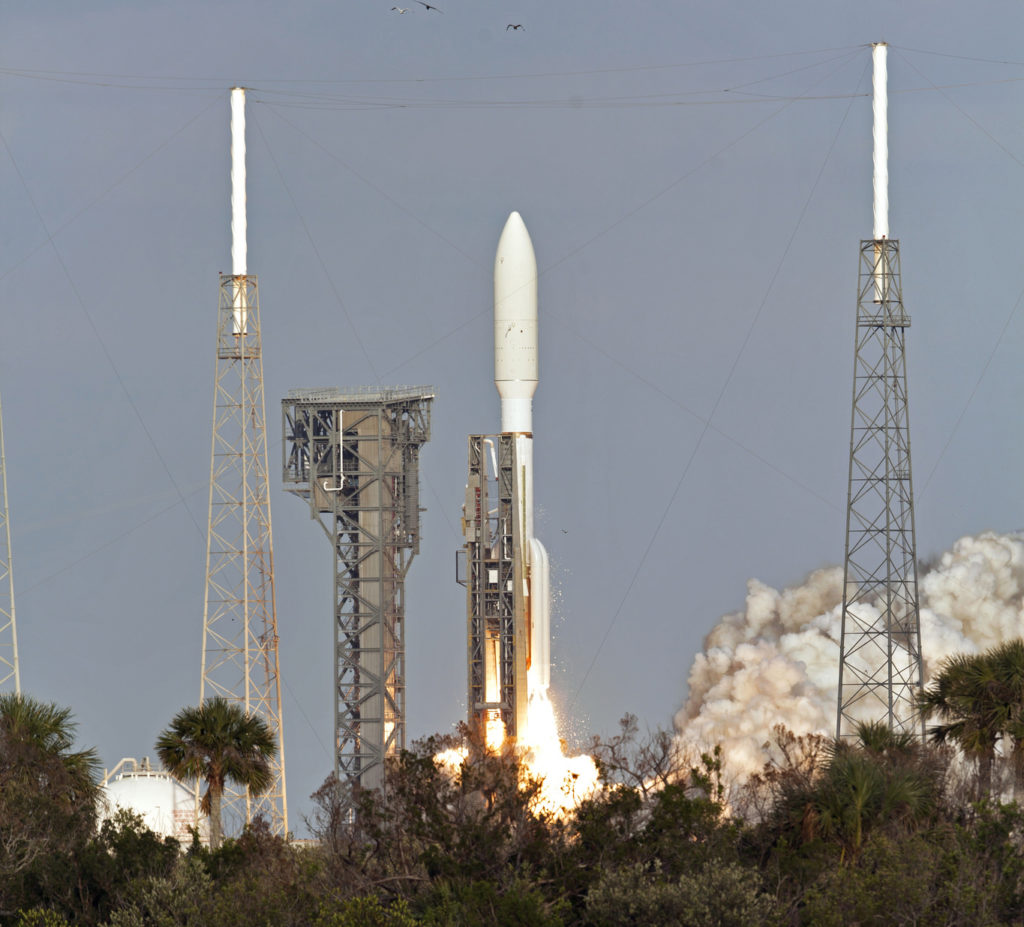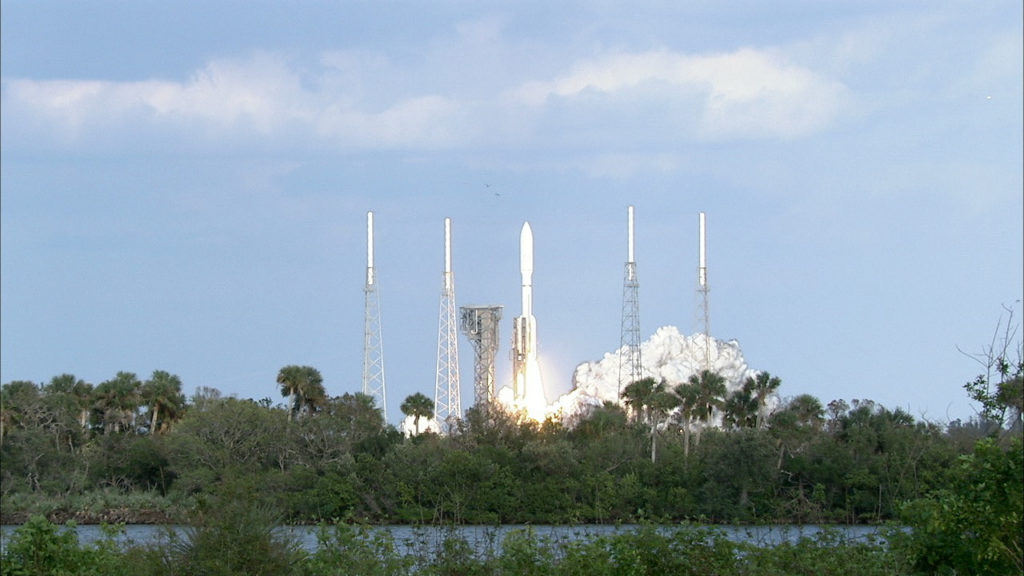
The second in a series of four next-generation weather satellites is now in geosynchronous transfer orbit above the Earth. NOAA’s Geostationary Operational Environmental Satellite-S (GOES-S) launched on a United Launch Alliance Atlas V rocket at 5:02 p.m. EST from Space Launch Complex 41 at Cape Canaveral Air Force Station in Florida.
There were no weather constraints at the time of rocket liftoff.
“It was a chamber of commerce day,” said NASA Launch Director Tim Dunn. “We’ve been working on GOES-S for about 15 months. This is a huge year for the Launch Services Program.”
GOES-S separated from the United Launch Alliance Centaur upper stage at 8:34 p.m. EST, followed shortly afterward by mission manager confirmation that the spacecraft’s Stage 1 solar array successfully deployed and the spacecraft was operating on its own power.
When it reaches geostationary orbit 22,300 miles above Earth, in approximately two weeks, it will be renamed GOES-17. It is the second in the GOES-R Series of weather satellites that includes GOES-16 (formerly GOES-R), along with -S, -T and -U. When the satellite is declared operational, late this year, it will occupy NOAA’s GOES-West position and provide faster, more accurate data for tracking wildfires, tropical cyclones, fog and other storm systems and hazards that threaten the western United States, including Hawaii and Alaska, Mexico, Central America and the Pacific Ocean, all the way to New Zealand. More information about NOAA’s GOES satellites is available at https://www.nasa.gov/content/goes.
NOAA manages the GOES-R Series program through an integrated NOAA/NASA office at NASA’s Goddard Space Flight Center in Greenbelt, Maryland. NASA also oversees the acquisition of the spacecraft, instruments and launch vehicles. Lockheed Martin Space of Littleton, Colorado, built the spacecraft and is responsible for spacecraft development, integration and testing.
This concludes today’s coverage of the GOES-S countdown, launch and ascent into space.

 The United Launch Alliance Atlas V rocket with NOAA’s GOES-S satellite launched at 5:02 p.m. EST from Space Launch Complex 41 at Cape Canaveral Air Force Station in Florida. Photo credit: NASA
The United Launch Alliance Atlas V rocket with NOAA’s GOES-S satellite launched at 5:02 p.m. EST from Space Launch Complex 41 at Cape Canaveral Air Force Station in Florida. Photo credit: NASA
